Why Is My Turtle Not/Less Active?
Turtles are generally active animals that are constantly on the move. So, if your turtle is not active, or suddenly becomes less active, it may be a sign that something is wrong. There are a variety of potential causes for a decrease in activity in turtles, ranging from simple to serious.
Therefore, when your turtle isn’t active, a variety of reasons could explain why. It could be sick, experiencing stress, doing brumation, unfriendly habitat, not getting enough food and water, or simply adjusting to a new environment. However, if your turtle has always been lively and suddenly becomes less active, it’s important to take notice and take steps to determine the cause.
And there could be other reasons as well. So, if you’re interested in this topic and wanna learn more, why not keep this article a read? We covered more below.
Related Blog:
All The Reasons Why Your Turtle May Not Be Active
As we have mentioned, many things can make your turtle lethargic or sluggish. Here are all the most common possibilities to consider:
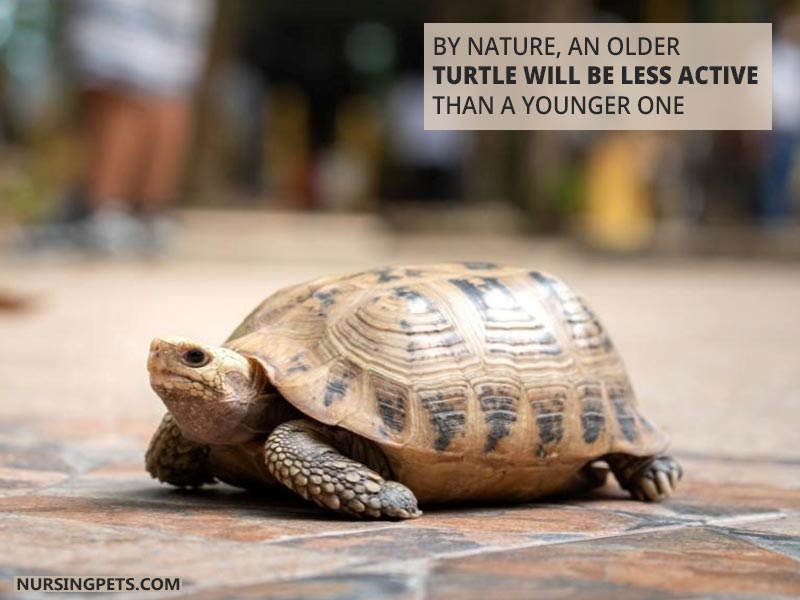
01. Turtle may be getting old. As turtles age, they tend to slow down and become less active.
02. Your turtle may be ill or sick. Sickness is a common reason for a decrease in activity levels in turtles. If your turtle is lethargic, not eating, or producing less waste, these could be signs of illness.
03. The temperature of your turtle’s environment may be too cold or hot for it to be active. Turtles are cold-blooded and rely on their environment to regulate body temperature.
04. Your turtle may not have enough space to move around. If its enclosure is too small, your turtle may not have enough room to exercise and stay active.

05. He is bored. In case there’s nothing for your turtle to do in its enclosure, it may become bored and inactive. Try adding some toys or new features to its enclosure to help keep it stimulated.
06. Turtles need a source of UVB light to help them absorb calcium. Without it, they can become lethargic.
07. Lack of food and water can also cause sluggishness in your turtle. In this case, they try to conserve energy by not moving.
08. It could be experiencing something called brumation. This is a state of inactivity that turtles can enter when the weather starts to get colder. When your turtle is less active during winter, it’s likely due to brumation.
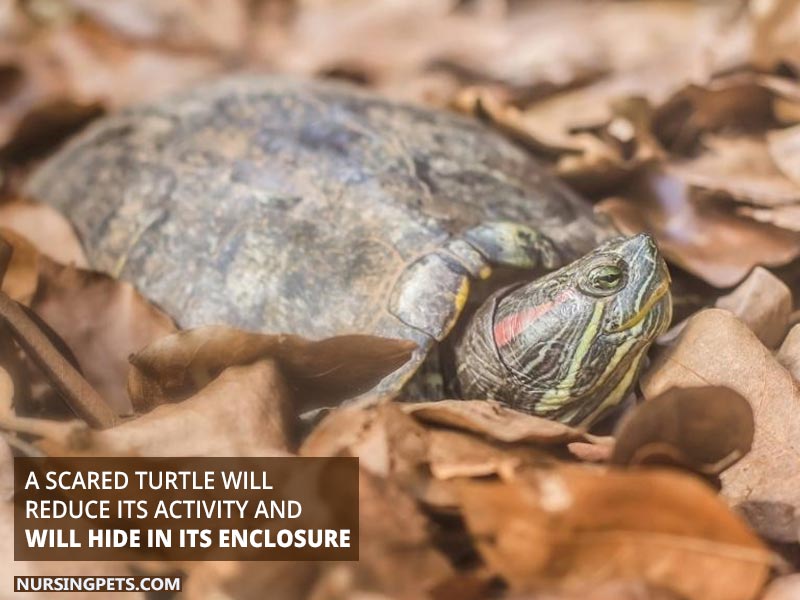
09. Turtle is scared. Sometimes turtles become afraid of something, and that can lead to reduced activity.
10. Your turtle is getting adjusted to the new environment. When you change the turtle habitat or move to a new place, it will take some time to adapt. And this could cause inactivity in the turtle.
Suppose you’re not sure why your turtle is suddenly less active; it’s always best to consult with a veterinarian. They can help you determine the cause and provide the best course of treatment.
Why Is My Turtle Not Moving Or Eating?
There are several reasons why your turtle may not be moving or eating. The first reason could be that the turtle is sick. When the turtle is sick, it may not have the strength to move or eat.
Another reason could be that the turtle is afraid. Suppose the turtle is afraid; it may not want to move or eat. Finally, the turtle could be hibernating. Hibernation is a natural process that turtles undergo when the weather gets cold.
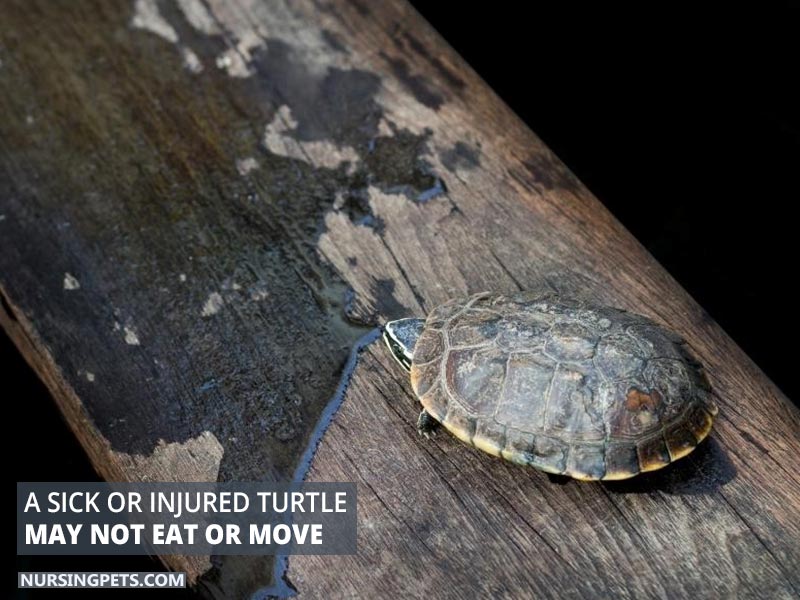
And during hibernation, the turtle’s metabolism slows down, and does not move or eat.
Moreover, there are also some less serious reasons why your turtle might not be moving or eating. If the temperature in its enclosure is too low, your turtle will be less active. Also, when the enclosure is too dirty, your turtle may not want to move around or eat.
So, make sure to keep your turtle’s home clean and the temperature consistent to encourage normal activity levels.
However, if your turtle is not moving or eating, visit a reptile expert to find out the problem.
Why Is My Turtle Not Moving But Eyes Open?
In case a turtle isn’t moving, but the eyes are open, it may be basking, in the brumation state, resting, or sick.
Basking is a normal turtle behavior in which they soak up heat and ultraviolet rays from the sun. While basking, turtles often stay still, and their eyes may be open or closed.
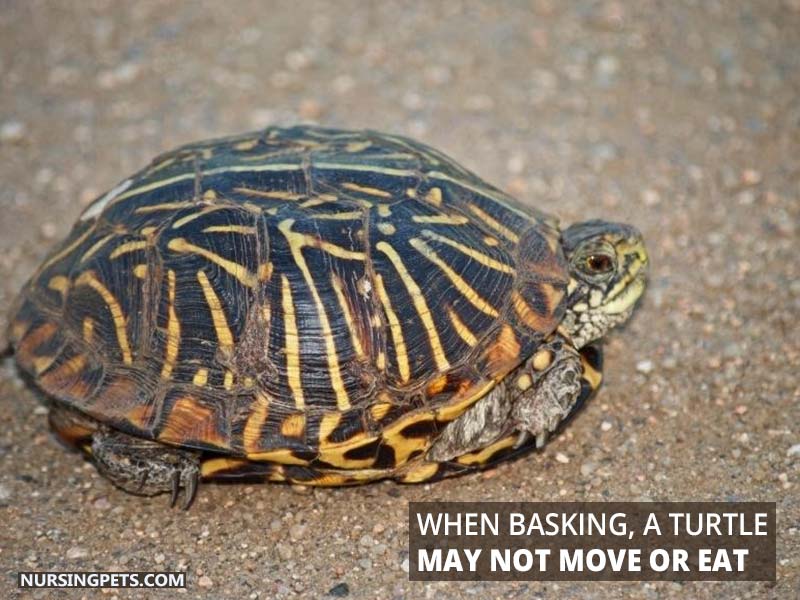
When your turtle is basking, don’t disturb it. Just let it enjoy the warm weather and soak up some vitamin D. When it’s done basking, it will return to its normal activity level.
However, if a turtle isn’t basking, it may be sick. Some common turtle illnesses include respiratory infections, shell rot, and vitamin A deficiency.
Additionally, brumation is a type of hibernation that turtles undergo when the temperature drops. During brumation, turtles will slow down their metabolism and become less active. They may even stop eating altogether.
Why Are Baby Turtles Not Active?
One reason is that they are not yet fully developed and need time to grow and develop their strength and energy. Their shells may not yet be hard and have not developed the ability to swim or move well.
Because of these things, baby turtles must be careful not to expend too much energy, or they will quickly become exhausted and die.
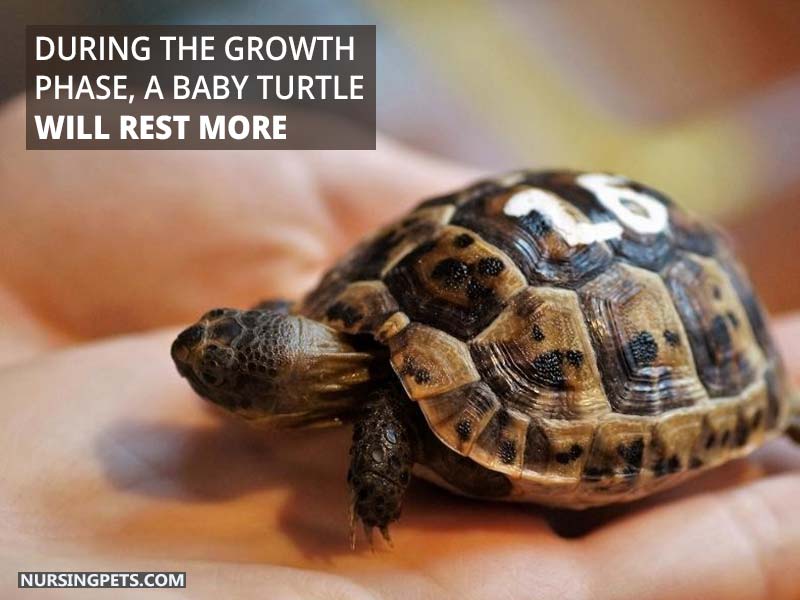
Also, baby turtles generally have not yet developed the ability to thermoregulate their body temperature, so they are more susceptible to temperature changes and need to spend more time basking in the sun to stay warm.
Additionally, baby turtles tend to be more timid and shy than adult turtles, so they may not be as active in exploring their surroundings. Finally, baby turtles may not have access to as much food as adult turtles, so they may not have the energy to be as active.
How Can I Make My Turtle More Active?
Well, so far, we have discussed why your turtle is not active and what are the reasons behind it. So, if you’re looking for ways to make your turtle more active, here are a few suggestions:

01. Take your turtle for a walk:
This is a great way to get your turtle moving and exploring. Be sure to provide a harness and leash, so your turtle doesn’t wander off.
02. Play with your turtle:
Turtles love to play, so try to engage in some fun activities with your pet. This could include playing catch, chasing a light, or swimming in a tub or pool.
03. Provide stimulating toys and environments:
There are a variety of commercial turtle toys available, or you could make your own. Be sure to also provide your turtle with a variety of environments to explore, such as different types of substrates, plants, and hiding places.
04. Feed your turtle live food:
Live food is a great way to get your turtle moving and encourage natural foraging behaviors. Try offering crickets, worms, or small fish.
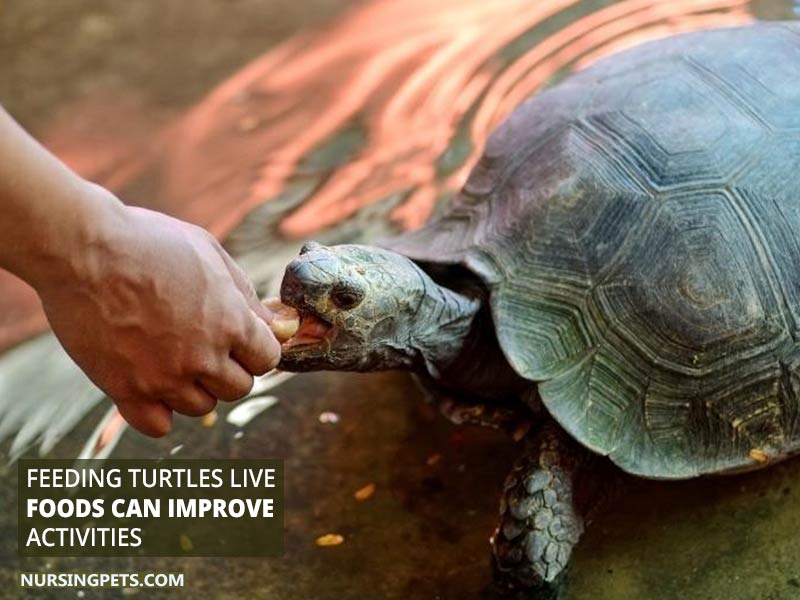
05. Take your turtle to the vet:
If your turtle is not active and you’re not sure why it’s always best to consult with a veterinarian. There could be an underlying medical condition causing the inactivity.
06. Give the turtle enough space:
Make sure your turtle has plenty of room to move around. A large tank or enclosure will give your turtle the space it needs to explore and exercise.
By following these tips, you can help to make your turtle more active and healthy.
Why Is My Turtle Not Active In The Winter?
As the weather gets colder, turtles naturally become less active. If your turtle is not as active as usual in the winter, there are a few possible explanations.
Your turtle may be less active because it is trying to conserve energy. Turtles are cold-blooded and rely on the sun to warm their bodies. In the winter, the sun is not as strong, so turtles have to work harder to stay warm.
This can make them tired, and they may choose to sleep more or spend more time basking in the sun.

Another reason your turtle may be less active is that its food sources are limited in the winter. Many turtles are omnivorous, but their diet changes seasonally. In the winter, there may not be as many insects or plants for them to eat. This can lead to weight loss and a decrease in activity.
Some turtles may even hibernate during the winter. This means they will bury themselves in the mud at the bottom of a pond or lake and remain there, barely moving, until the weather warms up again.
So, in case your turtle is less active during the winter, don’t worry – this is perfectly normal! Just make sure they have a warm, safe place to stay during the cold months.
Why Is My Turtle Sitting on The Bottom of The Tank?
A turtle sitting at the bottom of the tank could be a sign of several different things. First, check the water level and make sure that it is not too low. Also, check the temperature of the water and make sure it is not too cold.
Other than those, your turtle may be sick, lethargic, and not want to move around much. To know more about this topic, you can read this article.
Why Is My Turtle Sleeping So Much?
Maybe your turtle is simply bored and has nothing else to do. Or, it could be a sign of a health issue. Also, this could be due to age-related changes if your turtle is a senior.
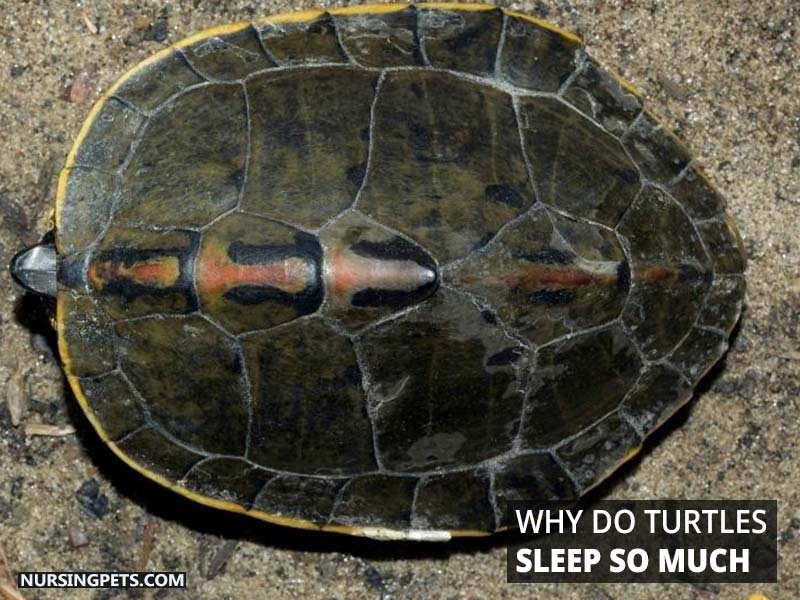
In general, it’s normal for turtles to sleep for about 8-12 hours per day. If you notice that your turtle is sleeping more than this, you should talk with a professional to find out any health issues.
Why Is My Baby Turtle Sleeping So Much?
As turtles grow, they tend to sleep more. This is because their bodies are growing, and they need more sleep to support this growth. Additionally, turtles are cold-blooded animals, and the temperature around them directly impacts their activity level.
Moreover, baby turtles are more susceptible to sickness and stress, so it’s possible that your turtle is sleeping more because it isn’t feeling well.
Finally, different turtle species have different activity levels; some are simply more active than others. So, if you have a naturally less active turtle, you may notice them sleeping more than an active turtle.
Why Is My Water Turtle Not Moving?
Well, your turtle could be sick, cold, or not getting enough food. However, sickness is a common reason why water turtles don’t move. When your turtle isn’t moving and has other symptoms, such as not eating, lethargy, and swollen eyes, then it’s likely sick.
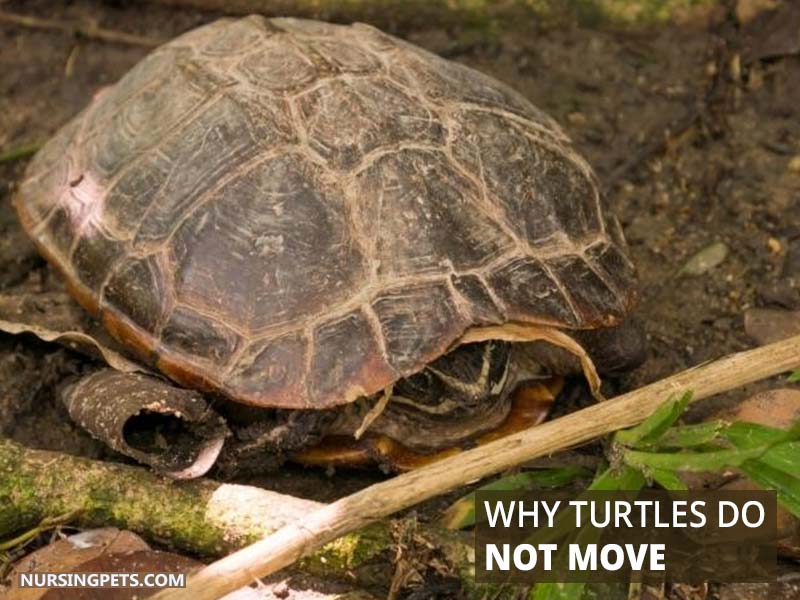
Additionally, it’s also possible that your turtle isn’t moving because it’s cold. As you already know, turtles are cold-blooded and rely on external heat sources to maintain body temperature. Therefore, if the water is too cold, your turtle will become sluggish and may stop moving altogether.
Moreover, it’s also possible that it’s not getting enough food. Turtles need a diet that’s high in protein, so if you’re not feeding your turtle enough food, it could become malnourished and stop moving.
Tips For Keeping Your Turtle Healthy And Active
Keeping your turtle happy and active isn’t very difficult. Here are a few tips to help you keep your turtle healthy and active:
01. Provide a clean and spacious habitat. Your turtle’s habitat should be large enough to allow for plenty of swimming and basking space and should be cleaned regularly.
02. Make sure they are getting enough exercise. Just like any other pet, turtles need to be active to stay healthy. One way to help your turtle is to add some toys or obstacles for them to climb over.
03. Offer a variety of foods. While turtles are mostly carnivorous, they should also have some vegetation in their diet for proper nutrition.
04. Keep the water clean. Turtle tanks require more frequent water changes than other types of pets, so be sure to clean and replace the water regularly.
05. Provide a basking area. Turtles need a warm spot to bask in, so be sure to provide a basking lamp and platform for your turtle to enjoy.
06. Get regular check-ups. Be sure to take your turtle to the vet for regular check-ups to ensure that they stay healthy.
By following these tips, you can help your turtle stay healthy and active for many years to come.
Final Takeaways
In a nutshell, a turtle may become less active because of illness, lack of food, and changes in temperature. Also, some turtles may simply be less active by nature than others.
However, there are several things you can do to make them more active, such as providing a warm basking area, offering a variety of foods, and ensuring they have enough space to move around.
And last but not least, keep in touch with a professional vet for any noticeable changes. Discuss any problems, and make sure what you are doing is the right thing.
Image Source: Canva.com/photos

